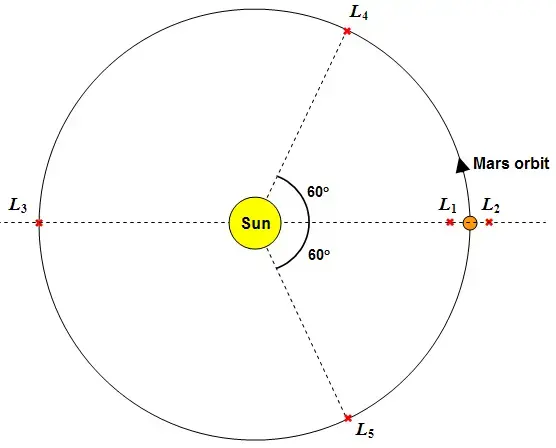- cross-posted to:
- [email protected]
- cross-posted to:
- [email protected]
By Albert Burneko
9:00 AM EDT on September 11, 2024
Mars does not have a magnetosphere. Any discussion of humans ever settling the red planet can stop right there, but of course it never does. Do you have a low-cost plan for, uh, creating a gigantic active dynamo at Mars’s dead core? No? Well. It’s fine. I’m sure you have some other workable, sustainable plan for shielding live Mars inhabitants from deadly solar and cosmic radiation, forever. No? Huh. Well then let’s discuss something else equally realistic, like your plan to build a condo complex in Middle Earth.
…



This is a pretty embarassing way to open this article:
NASA legitimately has a plan for this, and no it’s not crazy, and no it doesn’t involve restarting the core of a planet:
https://phys.org/news/2017-03-nasa-magnetic-shield-mars-atmosphere.html
You just put a giant magnet in space at Mars’ L1 Lagrange point (the orbital point that is stable between Mars and the sun), and then it will block the solar wind that strips Mars’ atmosphere.
Otherwise cosmic rays etc are blocked and interrupted by the atmosphere, not the magnetosphere.
The confident dismissiveness of the author’s tone on a subject that they are (clearly) not an expert in, let alone took the time to google, says all you really need to know about how much you should listen to them.
also just… caves and shit.
This is cool. Reading the article I’m not sure if 1-2 Tesla is sufficient for the shield, or if you would actually need a lot more. But either way I feel like when we get to the point that we are seriously colonizing Mars in such a capacity that we need to worry about the magnetosphere, that putting a powerful magnet at the L1 point wouldn’t really be that big a deal.
The rub there is that it’s 1-2 Tesla’s over the whole cross sectional area of Mars (I believe).
It’s not that hard to make a 2 Tesla magnet, but the most powerful electromagnet we’ve ever made is only 45 Tesla’s and even that only produces a 2 Tesla strong field out to 2.8m. So you might be looking at a Mars diameter worth of small magnets.
Wouldn’t that make it not an embarrassing way to open the article at all then?
No, not really. If we’re talking about colonizing a planet, building a bunch of magnets connected to solar panels is not going to be that big or expensive a part of it.
It’s also the kind of relatively cheap thing that takes a long time that we may as well get started now. I mean we churn out that much bullshit e-waste constantly for no reason, if we were more focused / more billionaire’s money went to that, you might actually be able to get it done.
The scale of what you just described is really goofy.
It’s also a very delicate shield against a very serious problem.
I don’t think it’s feasible to protect a mars-diameter disc of massive magnets from damage by either normal objects traveling through the area or from some human engineered attack.
If you’re imagining the capacity to create such an emplacement, don’t you imagine that such phenomenal effort and wealth of resources would be better spent solving some terrestrial problem?
There’s a real difference between e-waste, which is mostly byproducts of the petroleum refining process with electronic components smeared liberally on, many of which rely on petroleum byproducts themselves and electromagnets, which are, at the scale you’re discussing, massive chunks of metals refined, shaped and organized into configurations that will create magnetic fields when dc is present.
I have a hard time imagining a level of focus required to bridge that gap.
The word you’re looking for is “big”. As in, it embiggens the noblest spirit.
It’s also not possible to protect the ISS from either of those and yet it’s operated fine for 30 years. You do not need every little bit of it to be perfect, you just need to deflect enough solar wind that it allows Mars atmosphere to build back up which is what provides the real protection.
Like I said, we waste more resources than that all the time. I’d rather we didn’t build yachts and country clubs and private schools, yet we do. There’s no reason to not get started building that array, especially if it will take a while.
That is not what e-waste is. E-waste primarily consists of silicon chips and the metal wires connecting them. Even the circuit boards themselves are primarily fibre glass, not petroleum.
And no, we wouldn’t be creating those using actual magnets, we’d be using electro magnets, which is just coils of wire connected to PV and logic chips.
I quite frankly flat out do not understand why people on the left are so against space exploration suddenly. You know that Elon Musk is not the only billionaire right? And you know virtually that all of them just sit on their wealth, and do nothing with it but wast on luxury lifestyles for themselves right? Yeah it would be better if billionaire’s did not exist, but as long as they do, why are you upset about their money going to space exploration as opposed to just yachts and $20,000 a night hotel stays?
Ever heard the song “whitey on the moon?”
Setting that aside, exploring space is not the same thing as building a company town for the world’s least mentally stable pregnancy fetishist oligarch in an unworldly cold desert where everyone is sure to die.
I would argue that the majority of sci-fi has predicted otherwise.
How much (metal, refined, produced on earth) wire would you say is required to produce an air (actually vacuum, but we know air core really well so there’s math for them) core electromagnet which can generate a field capable of deflecting solar wind over the area of its pv array? In order to maintain that field strength, how much current is required? Can it be supplied by a pv array equal in area to the effective field area? How many of those are needed to cover the area of mars?
That’s-a lotta metal!
Also speaking as a person who deals with e-waste daily, it’s both by volume and mass composed of petroleum products. Fiberglass is reenforced plastic. Ics are 90% plastic by volume. Discrete components are made of petroleum distillates in a lot of cases and encased in them in even more cases!
Even if you only considered the boards as the e-waste and not the plastic cases and bodies themselves, those dont exist in a vacuum like our hypothetical electromagnets, a reduction in printer boards means fewer printers which are almost completely just plastic.
Well, that’s a lot saner than nuking the poles.
Doesn’t seem like we’re near technical feasibility, though - how would you power such a massive magnet in space?
deleted by creator
The linked article says the artificial magnetosphere would encompass the entire planet and points out this includes two critical places where the most atmosphere is lost.
So yes by virtue of it encompassing the whole planet it does cover those two places… I suppose they wanted to specifically mention them
deleted by creator
Indeed, “in the future” seems to be doing quite a lot of heavy lifting. As noted, 1-2 Tesla is a pretty powerful magnet - so you’d need a pretty big and powerful magnet.
That is certainly an important catch.
Just because people talk about something at one conference that doesn’t make it real, feasible, happening, etc. As the actual people said, it’s “fanciful”. It’s literally just people talking. It doesn’t matter where they work.
deleted by creator
You’re talking about the people who lowered a car from a rocket crane onto the surface of another planet, you can be thoughtfully critical, but their technical record has earned them a lot more than surface level dismissal.
Solar panels would be my guess, though you can always build a space based nuclear reactor if you can refuel it and get rid of its waste.
It would certainly need a lot more to figure out an actual feasible plan, but I don’t think there’s anything fundamentally impossible about doing it with today’s technology, let alone the future’s.
Mars gets roughly half the light of Earth, so I don’t think Solar panels would be realistic (how much solar panel surface would you need to power a magnet of that size?)
I’m also not sure a nuclear reactor is realistic - forget the nuclear waste, how do you get rid of the heat waste?
You’d need quite a big magnet operating at a level akin to superconducting magnets in particle accelerators.
Perhaps someone could calculate more accurate numbers and feasibility, but to me, it currently sounds very out of reach for us (not impossible, mind you).
deleted by creator
I… don’t think that’s true? The L1 point is fairly close (in solar system scale) to the planet.
This is false. https://www.wolframalpha.com/input?i=Lagrangian+points+of+mars L1 is 137Million Miles from the sun. Though it is only 650,000 miles from Mars, which is probably where you are getting your 2.2million Km from.
Why oh why did you change from miles to km? :(
Superior SI unit.
I’m not hating on km… I’m hating on listing one distance in miles then the next one in km. I don’t care which system they used, I care that the two numbers we are supposed to compare are in different units. :(
Ahhhhh.
Yes I see. That does make sense.
deleted by creator
I’m pretty sure I saw a documentary about doing this exact thing back in 2003…
lol… According to your own citation, this wacky scheme was just a talk at some conference. Like the researchers said, it’s “fanciful”. It’s not real.
This is rich coming from someone who posts articles that they didn’t read.
Yeah bud, there’s also these little shelters called caves.
The author of the article literally guffaws at the prospect of respinning a planet’s core when that’s not remotely how you would approach that problem.
It would be like writing an article saying “Come on, you believe in vaccines? What, you think a scientist can cut open your individual cells and put antibodies in each one? You really think they have tweezers that small? Get real dum dum.”